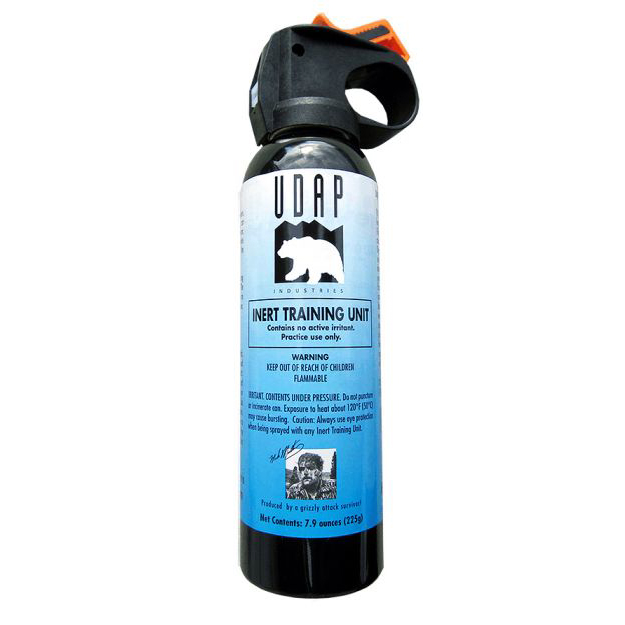Improving Wilderness Safety: Collaborative Efforts With Bear Spray And Training

Table of Contents
The Importance of Bear Spray in Wilderness Safety
Bear spray is a powerful deterrent that significantly improves your chances of a safe encounter with a bear. Understanding its proper use and limitations is crucial for wilderness safety.
Understanding Bear Spray Effectiveness
- Proper spray distance: Aim for a 20-30 foot distance, allowing the spray cloud to envelop the bear.
- Aiming techniques: Target the bear's face, focusing on the nose and eyes. Avoid spraying into the wind.
- Wind conditions: Wind can significantly impact effectiveness; avoid using bear spray in high winds.
- Types of bear spray: Aerosol sprays provide a wider dispersal pattern, while foam sprays are less affected by wind.
Bear spray's effectiveness stems from capsaicinoids, the same compounds that make chili peppers spicy. These cause intense burning and irritation, overwhelming a bear's senses and prompting it to retreat. Many reputable brands offer different features, including varying nozzle designs and spray range. Research and choose a reputable brand that meets your needs.
Carrying and Deploying Bear Spray Correctly
- Accessible carrying methods: Use a readily accessible holster or pouch, allowing quick access in an emergency. Avoid placing it in a backpack.
- Practice drills: Regularly practice deploying your bear spray to become familiar with its mechanism and ensure smooth operation under pressure.
- Maintaining spray functionality: Check expiration dates and store bear spray in a cool, dry place, away from direct sunlight and extreme temperatures.
Familiarization is key. Knowing where your bear spray is and how to quickly deploy it could be the difference between a frightening encounter and a safe resolution. Watch videos demonstrating proper deployment techniques – a quick search on YouTube will show many helpful resources.
Bear Spray vs. Other Deterrents
- Air horns: While air horns can startle bears, they are less effective than bear spray in deterring aggressive behavior.
- Bear bells: Bear bells can help alert bears to your presence, but they offer minimal protection during a close encounter.
- Other deterrents: Other deterrents like whistles or shouting are unreliable when facing a defensive or aggressive bear.
Bear spray is the most effective deterrent in critical bear encounters. While other methods might play a role in preventative strategies (like making noise while hiking), bear spray provides the best chance of successfully deterring a charging bear.
Wilderness Safety Training: Essential Skills and Knowledge
Proper training drastically improves your chances of avoiding dangerous situations and responding appropriately if an encounter occurs. This includes understanding bear behavior, implementing safe practices, and knowing how to react during an encounter.
Recognizing Bear Behavior and Habitat
- Identifying bear signs: Learn to recognize bear scat, tracks, claw marks, and other signs of recent bear activity.
- Understanding bear behavior: Differentiate between defensive and predatory bear behaviors. Defensive behaviors often involve a bear feeling threatened or protecting cubs.
- Recognizing high-risk areas: Identify areas known for high bear activity, such as berry patches or streams.
Many national park services and wildlife organizations provide excellent resources on bear behavior and identification. Familiarizing yourself with these resources can significantly enhance your safety.
Practicing Safe Hiking and Camping Techniques
- Hiking in groups: Hiking with a partner or group reduces the risk of encountering bears alone.
- Making noise while hiking: Make noise while hiking to alert bears to your presence and avoid surprising them.
- Storing food properly: Utilize bear canisters or hang food properly away from your campsite.
- Setting up a bear-resistant camp: Keep your campsite clean, and store food and scented items securely.
Employing bear-resistant food storage methods is critical. Learn how to properly hang food using a bear bag, or invest in a bear-resistant canister. Your local park service can provide more specific guidelines for your area.
Responding to Bear Encounters
- Different responses to different encounters: React differently to a curious bear versus an aggressive one. A curious bear may simply be investigating, while an aggressive bear requires immediate action.
- Strategies for deterring bears: Use bear spray, make yourself appear large, and slowly back away. Never run.
- Understanding "fight or flight" responses: Understand your body’s natural response to fear and develop strategies to manage it. Remaining calm is paramount.
Knowing how to react calmly and decisively during a bear encounter is crucial. This requires practice and education. Many wilderness safety courses cover these procedures in detail.
Collaborative Efforts for Enhanced Wilderness Safety
Improving wilderness safety is not just an individual responsibility; it requires collaboration between various stakeholders.
The Role of Park Services and Wildlife Organizations
- Information dissemination: Park services and wildlife organizations provide crucial information regarding bear safety and wilderness etiquette.
- Safety guidelines: They publish safety guidelines and best practices for wilderness recreation.
- Educational programs: They offer educational programs and workshops to improve public awareness.
- Reporting mechanisms: They provide mechanisms for reporting bear sightings and incidents.
Utilize the resources available from your local park service and wildlife agencies. Their websites usually have valuable information about bear safety in your region.
Community Initiatives and Education Programs
- Local workshops: Participate in local workshops and seminars on wilderness safety and bear awareness.
- Outreach events: Attend outreach events to learn more about responsible recreation practices.
- Public awareness campaigns: Support and participate in public awareness campaigns promoting wilderness safety.
- Volunteer programs: Consider volunteering with organizations that work to protect wildlife and educate the public.
Sharing Knowledge and Experiences
- Online forums: Engage in online forums and social media groups dedicated to wilderness safety and responsible recreation.
- Hiking communities: Share your experiences and learn from others within your hiking community.
- Sharing best practices and safety tips: Actively share knowledge and safety tips with fellow hikers and outdoor enthusiasts.
Conclusion
Improving wilderness safety is a shared responsibility, demanding a combination of individual preparedness and collaborative efforts. By understanding the vital role of bear spray in deterring bear encounters, investing in comprehensive wilderness safety training, and participating in community initiatives, we can significantly enhance our chances of a safe and enjoyable experience in the outdoors. Remember, proper use of bear spray, coupled with thorough training, is key to maximizing your wilderness safety. Learn more about wilderness safety practices and responsible bear spray usage today, and share your knowledge to create a safer outdoor environment for everyone.

Featured Posts
-
 Understanding The Current Core Weave Stock Situation
May 22, 2025
Understanding The Current Core Weave Stock Situation
May 22, 2025 -
 Rising Gas Prices Hit Mid Hudson Valley Hard
May 22, 2025
Rising Gas Prices Hit Mid Hudson Valley Hard
May 22, 2025 -
 Klopps Agent Addresses Real Madrid Manager Speculation
May 22, 2025
Klopps Agent Addresses Real Madrid Manager Speculation
May 22, 2025 -
 3 Billion Spending Cut By Sse Analysis And Implications For Investors
May 22, 2025
3 Billion Spending Cut By Sse Analysis And Implications For Investors
May 22, 2025 -
 Dak Lak Phu Yen Chay Bo Hon 200km Hon 200 Nguoi Tham Gia
May 22, 2025
Dak Lak Phu Yen Chay Bo Hon 200km Hon 200 Nguoi Tham Gia
May 22, 2025
Latest Posts
-
 Music World Mourns Dropout Kings Lose Vocalist Adam Ramey
May 22, 2025
Music World Mourns Dropout Kings Lose Vocalist Adam Ramey
May 22, 2025 -
 Music World Mourns Dropout Kings Adam Ramey Dead At Age
May 22, 2025
Music World Mourns Dropout Kings Adam Ramey Dead At Age
May 22, 2025 -
 Dropout Kings Singer Adam Ramey Dead At Age
May 22, 2025
Dropout Kings Singer Adam Ramey Dead At Age
May 22, 2025 -
 Steelers Draft Strategy Kipers Aaron Rodgers Revelation Impacts 2025 Plans
May 22, 2025
Steelers Draft Strategy Kipers Aaron Rodgers Revelation Impacts 2025 Plans
May 22, 2025 -
 Dropout Kings Lose Vocalist Adam Ramey A Tribute
May 22, 2025
Dropout Kings Lose Vocalist Adam Ramey A Tribute
May 22, 2025
